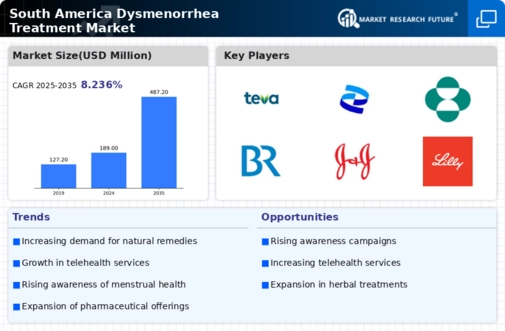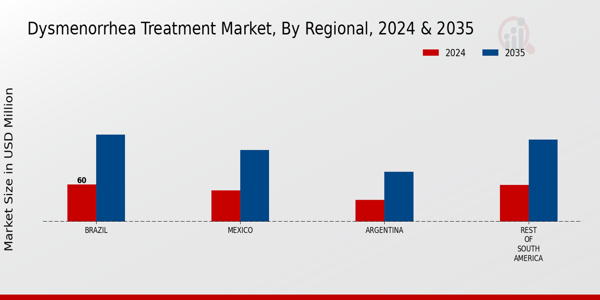The South America Dysmenorrhea Treatment Market is characterized by a diverse landscape of pharmaceuticals and therapeutics aimed at alleviating the symptoms associated with dysmenorrhea, a prevalent menstrual pain experienced by a significant portion of the female population. With a growing awareness regarding women’s health and an increasing emphasis on research and development in pain management solutions, the market is witnessing a progressive drive toward innovative treatments.
This has led to heightened competition among key players, as they strive to establish a firm foothold in the region by introducing effective and accessible treatment options. Market dynamics are influenced by factors such as demographics, healthcare infrastructure, regulatory frameworks, and rising health consciousness, making it essential for companies to adapt their strategies to meet the evolving needs of female patients. Teva Pharmaceutical Industries has positioned itself as a leading entity in the South America Dysmenorrhea Treatment Market.
By leveraging a robust portfolio of generic and specialty pharmaceuticals, Teva provides a range of analgesics specifically designed to address dysmenorrhea symptoms effectively. The company's strength lies not only in its extensive distribution network but also in its commitment to research that focuses on women's health issues. Teva's presence in South America is reinforced by strategic partnerships and collaborations aimed at enhancing access to treatment and responding to local market demands.
Furthermore, Teva’s competitive pricing strategies enable it to cater to a wider demographic, making its products more accessible to various segments of the population requiring dysmenorrhea treatment.HoffmannLa Roche, commonly known as Roche, also plays a significant role in the South American Dysmenorrhea Treatment Market, characterized by its innovative approaches to pain management and treatment solutions.
The company has established a presence through its advanced pharmaceutical products targeting menstrual pain, which are often complemented by a strong focus on biotechnology. Roche's strength in the market is amplified by its commitment to research and development, consistently seeking to introduce novel therapies that meet the unique needs of women. This includes personalized medication options that take into account individual responses to treatment. Roche has engaged in strategic mergers and acquisitions aimed at bolstering its portfolio in Women's Health, thus enhancing its capabilities within the South American market.
The company's dedication to providing high-quality treatments and its strong presence in regional healthcare facilities contribute significantly to its competitive edge, positioning Roche as a formidable player in dysmenorrhea treatment within the region.

























Leave a Comment